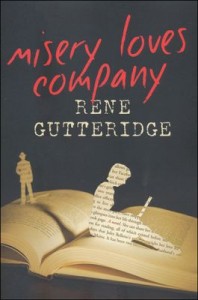If you had 1-3 sentences in which to convince someone to buy your book, what would you say?
Your answer reveals your manuscript’s high concept. High concept is a phrase used in the film industry for an idea that’s so simple you can describe it in one to three sentences. AND the idea needs to be fascinating, not run-of-the mill.
Whether a manuscript is fiction or nonfiction, it can be high concept.
1. High concept requires that the idea be unique or a twist on a familiar idea.
Obviously, for a novel, you can’t tell all the plot details in a sentence or two. Instead, you want to focus on what sets your story apart. For example, Rene Gutteridge’s novel Misery Love Company can be described this way: Unlike Stephen King’s Misery, the tables are turned and a best-selling author kidnaps a fan to exact revenge. The fan must figure out why.
Misery Loves Company is high concept because it’s a twist on a story most of us are familiar with–and Misery is high concept because it, too, was a twist on a familiar idea: a rabid fan wanting to get up-close-and-personal with a best-selling author.

For a nonfiction book, a potential reader might not get jazzed about a book recounting parenting challenges in today’s secularized world. Been there, read that. But a book about a family that went one year unplugged electronically every Sabbath and spent that time together…not only is that idea engaging, but it’s also high concept.
2. The idea must be exotic without being weird. (It must appeal to a broad audience.)
If you chose to write a novel about a chicken that wanted to occupy the farmer’s body, that book probably wouldn’t have broad appeal. A few other quirky thinkers might gravitate to the idea, but most readers would not find this a fascinating topic. It’s unique but also kind of weird.
In nonfiction, if you wrote about a town that decided to collect all the plastic bags in the community and piled them in the town’s square, that’s weird. What’s the point? BUT if the community collected the bags and made them into beautiful tote bags, donating the money to an environmentally-oriented nonprofit, that starts sounding like an idea readers would want to check out.
3. The description contains the conflict.
For a novel, what problem is the protagonist trying to solve? If it’s relevant and explains what’s unique about the idea, you might also add what barriers make it difficult to solve. If the setting is an important part of the story, that should be included as well.
Gone with the Wind, for example, is a high concept book that I would describe this way: During the Civil War, Scarlett O’Hara, a cunning Southern woman, connives to find love but doesn’t recognize it when she sees it. Instead, she spends most of her life pursuing Ashley Wilkes, who is unsuited to her.
Condensing such an immense work into two sentences leaves out vast swaths of details, but when boiled down to its essence, the concept can be communicated. I’ve provided the time period, just a glimpse of the setting, who the protagonist is, what (main) problem she’s trying to solve and the major barriers she encounters.
For a nonfiction book, the problem it sets out to fix should be pretty apparent. If not, back to the drawing board with you!
Even a devotional is solving a problem: Our struggle to spend time with God. But if you add to the manuscript’s description what makes this devotional unique, you’ll hone in on the high concept.
4. All of these elements must be true of a manuscript for it to be high concept.
If you can’t check off from your list each of the above qualities, your idea isn’t high concept.
So what? Why is high concept even important?
Because the idea of the book is sold over and over again: to an agent; to an editor; to a publishing committee; to a bookstore buyer; to the reader; and from one reader to that person’s sphere of influence.
If the book is hard to talk about, it’s a lot harder to convince people to be interested. It’s unlikely anyone in that string of individuals listed above will respond positively to this single sentence: “It’s hard to describe, but it’s great.” Yawn.
High concept forces the writer to define what the core of the manuscript is about, and that definition will keep the book from meandering.
High concept means the book is marketable.
High concept helps the writer to discover his/her voice. The concept itself might help the writer to figure out the voice in which the book must be written. When Rene decided to create a takeoff on Stephen King’s book, she knew she would have to generate suspense and sustain it. As a matter of fact, when Rene first told me about this idea, her pitch to me contained why the fan was kidnapped. But that information is withheld in the book’s back cover copy and in all publicity because giving away too much spoils the suspense.

No comments:
Post a Comment